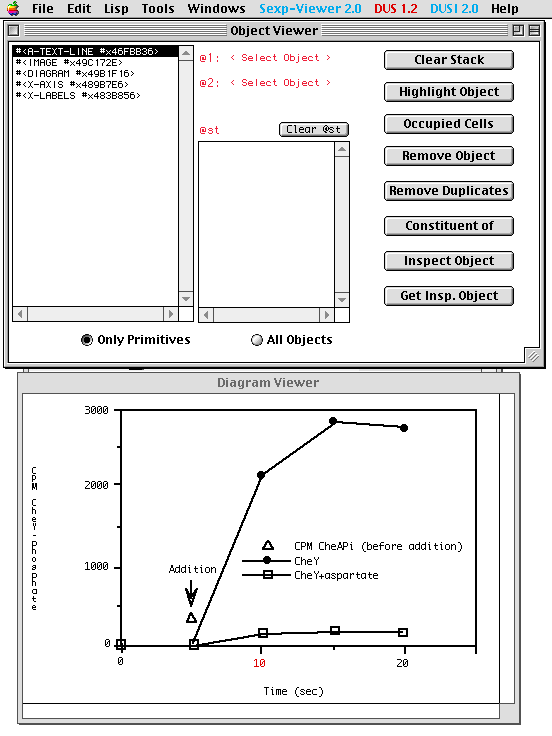
Each object in the parsed diagram, whether a primitive such as a line or a higher-level object such as X-Axis, is represented by a program object at run time, specifically a CLOS class instance in Lisp. To visualize and examine the correspondence between the run-time objects and their counterparts in the visual image, we developed the DUS Inspector, or DUSI. Below we show the Object Viewer (OV) and the Diagram Viewer (DV) in DUSI.

The x-axis tick label, "10" has been selected by clicking on it in the DV. The corresponding object, "#<A-TEXT-LINE #x46FBB36> appears selected at the top of the stack window in the OV. In addition, with the text-line item selected, the "Constituent of" button in the OV was pressed, causing all ancestors of the text-line in the parse tree to be placed on the stack. This shows that A-TEXT-LINE is a constituent of an X-LABELS object which is in turn a constituent of an X-AXIS object which is a constituent of a DIAGRAM object. The DIAGRAM object is the only constituent of the overall IMAGE object. (A multi-part plot, a set of x,y diagrams, can have a set of more than one DIAGRAM in an IMAGE.)
| Next: Using the Lisp Inspector |
| Back to Index page |